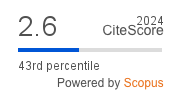Firefly-Based Segmentation and Residual Deep Learning for Multi- Class Diabetic Retinopathy Detection
DOI:
https://doi.org/10.4114/intartif.vol28iss76pp223-252Keywords:
Diabetic Retinopathy Detection, Firefly Heuristic Clustering,, Residual Deep Learning, Spatio-Textural Feature Extraction, Class Imbalance MitigationAbstract
In recent years, the rise in diabetic retinopathy cases has posed significant challenges to existing computeraided diagnosis (CAD) solutions. These systems often focus on detecting specific abnormalities, such as microaneurysms, exudates, or hemorrhages, rather than providing a comprehensive diagnostic approach. Moreover, state-of-the-art deep learning-based methods face critical limitations, including a lack of contextual understanding, gradient vanishing/explosion issues, and failure to address class imbalance at the instance level, which impacts multi-class classification accuracy. To overcome these challenges, a novel diabetic retinopathy prediction model is proposed, leveraging firefly heuristic segmentation and residual deep spatio-textural feature learning. Instead of processing entire fundus images, the model applies Firefly heuristic-driven Fuzzy C-Means (FFCM) clustering to segment regions of interest (ROIs) corresponding to microaneurysms, exudates, and hemorrhages. Residual deepspatio-textural features are then extracted using Gray-Level Co-occurrence Matrix (GLCM), ResNet50, and AlexNet. These complementary features enhance diversity and heterogeneity, which are further processed using random forest learning. The proposed model achieves outstanding performance, with an average accuracy of
99.77%, precision of 99.88%, recall of 99.64%, F-measure of 99.75%, sensitivity of 99.64%, and specificity of 99.86%, surpassing existing approaches. FFCM mitigates the class imbalance problem, ResNet50 addresses gradient challenges, and AlexNet contributes high-dimensional features, ensuring robust and scalable diagnostics. This innovative solution demonstrates exceptional generalizability and runtime efficiency, offering a cost-effective, comprehensive CAD tool for diabetic retinopathy detection.
Downloads
Metrics
Downloads
Published
How to Cite
Issue
Section
License
Copyright (c) 2025 Iberamia & The Authors

This work is licensed under a Creative Commons Attribution-NonCommercial 4.0 International License.
Open Access publishing.
Lic. under Creative Commons CC-BY-NC
Inteligencia Artificial (Ed. IBERAMIA)
ISSN: 1988-3064 (on line).
(C) IBERAMIA & The Authors









